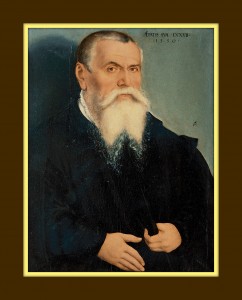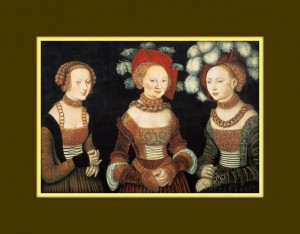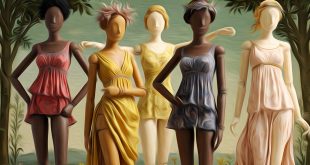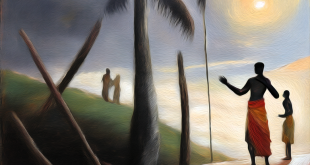 He is the artist who had created an artistic workshop in Wittenberg, introducing important changes in the pictorial landscape of his time, and with the colors also representing the nude and eroticism, with an extreme attention to detail. His desire to change, become pictorial reality, where everything that is not traditional, sensuality, charm and the pleasure of life, hovering lightly, without religious chains. Cranach did not sign his works with his full name, but from 1504 to 1506 his signature consisted of an entwined “LC”, separated initials “LC” from 1506 to 1509, and finally (from 1509 to 15149, his signature it consisted of these spaced initials and his coat of arms: the winged serpent.
He is the artist who had created an artistic workshop in Wittenberg, introducing important changes in the pictorial landscape of his time, and with the colors also representing the nude and eroticism, with an extreme attention to detail. His desire to change, become pictorial reality, where everything that is not traditional, sensuality, charm and the pleasure of life, hovering lightly, without religious chains. Cranach did not sign his works with his full name, but from 1504 to 1506 his signature consisted of an entwined “LC”, separated initials “LC” from 1506 to 1509, and finally (from 1509 to 15149, his signature it consisted of these spaced initials and his coat of arms: the winged serpent. When, for example, you observe his nude Venus (an enigmatic woman dreamily stretched), you can not fail to be enraptured, watching her jewelry and her hat. That blonde goddess looks at you straight in the eye, almost to want you to seduce. He, a highly cultured man, and Italian classical art lover, in the beginning of the sixteenth century has opened the eyes of Germany, enabling the start of a humanist season. He discussed with the drafting of Luther’s famous theses, generating with the colors a new Lutheran representation of society, along with that of the woman. The first decade of Cranach’s stay at Wittenberg was marked by a series of experiments in which he adapted his style to suit the demands of the Saxon court.
When, for example, you observe his nude Venus (an enigmatic woman dreamily stretched), you can not fail to be enraptured, watching her jewelry and her hat. That blonde goddess looks at you straight in the eye, almost to want you to seduce. He, a highly cultured man, and Italian classical art lover, in the beginning of the sixteenth century has opened the eyes of Germany, enabling the start of a humanist season. He discussed with the drafting of Luther’s famous theses, generating with the colors a new Lutheran representation of society, along with that of the woman. The first decade of Cranach’s stay at Wittenberg was marked by a series of experiments in which he adapted his style to suit the demands of the Saxon court. Following his visit to the Netherlands in 1508, Cranach experimented with Italo-Netherlandish ideas of spatial construction and with monumental nudes. He represented female saints as beautiful and elegant ladies in fashionable dress and covered with jewelry, with a long series of paintings of Venus, Lucretia, the Graces, the judgment of Paris, and other subjects that serve as pretexts for the sensuous female nude. Both of Cranach’s sons were members of his studio: Hans, left a few signed works that are indistinguishable in style from those of his father, while Lucas the Younger continued to work in the family style long after his father’s Death.
Following his visit to the Netherlands in 1508, Cranach experimented with Italo-Netherlandish ideas of spatial construction and with monumental nudes. He represented female saints as beautiful and elegant ladies in fashionable dress and covered with jewelry, with a long series of paintings of Venus, Lucretia, the Graces, the judgment of Paris, and other subjects that serve as pretexts for the sensuous female nude. Both of Cranach’s sons were members of his studio: Hans, left a few signed works that are indistinguishable in style from those of his father, while Lucas the Younger continued to work in the family style long after his father’s Death.
You can see more on Meeting Benches, looking for: THE MAN CALLED SWIFTEST OF PAINTERS – Lucas Cranach The Elder: when art become popular, in period of great political upheavals
 Meeting Benches World art in all forms
Meeting Benches World art in all forms







